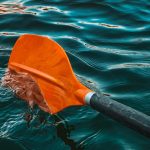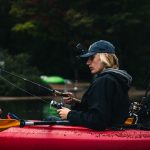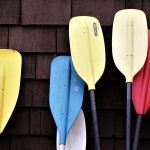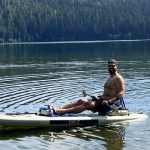In this guide we discuss different sizes of kayak paddles, give tips to help you select the right paddle length and consider other important paddle factors.

Paddle boards are the perfect choice for those lovely, warm summer days when you want to not only be on the water, but in it, too.
Sure, they’re a bit trickier to master than kayaks, but absolutely worth it for anyone looking to make the most out of those long hours spent out on the water.
The fact that there are so many SUP options to choose from is truly spectacular. But it can also make it tricky to find the right stand up paddle board for your specific desires.
We’ve assembled a complete guide to the various types of paddle boards to help you understand which of the many options will suit you best.
Below, we’ll look at the different types of paddle boards based on material, design, size, and function. We’ll also answer a few of your most commonly asked questions so you know everything important about SUPs in all their glorious types.
By the end of this post, you’ll be ready to get out paddle boarding and enjoy those warm days on your favorite lakes, rivers, and coastal waters.
Does Having the “Best” or “Right” Paddle Board Type Really Matter?

You might be looking at all the paddle board options in your local stores or online retailers and thinking, “Oh, this one should work great!” or “That one looks amazing!” without really taking a deep dive into each of the paddle boards.
Big mistake!
Paddle boards may look fairly similar (and many of them are), but the differences can be fairly significant from model to model.
For example, an inflatable board may perform well on lakes, but when it comes to whitewater paddle boarding, they’re just not able to take a beating.
Or, maybe you’ve gotten your hands on a Yoga paddle board so you can enjoy a good Vinyasa flow out on the water, but it just can’t hack it when it comes to handling coastal waters or strong currents.
As with kayaks, the types of paddle boards you choose really do matter. You’ve got to choose a SUP board that is built to handle your daily use, that serves your needs well, and which will work for the specific activity (or activities) you plan to get up to.
That’s what this article is all about! We’ll look at the various types of paddle boards (based on material, design, shape, size, and function) to ensure you get only the best stand up paddle board for you and you alone.
Different Types of Stand Up Paddle Board Materials
Let’s start off by focusing on the various materials used in the construction of paddleboards. Often, these materials will inform the stand up paddle board’s function, or will vary depending on the specific activity the SUP is designed for.
Plastic Paddle Boards

Unsurprisingly, the cheapest types of stand up paddle boards are made using plastic–either PVC, polycarbonates, or polyethylene.
Polyethylene
Polyethylene is the same plastic used in the construction of both thermoplastic and rotomolded hard-shell kayaks. Most PE paddleboards are built using rotomolding, forming a single, solid hard-shell stand up paddle board with a hollow core for buoyancy.
PE paddle boards are usually very tough, fairly inexpensive, and are great options for beginner paddlers.
PVC/Polycarbonates
PVC and polycarbonate plastics are often combined to form both hard-shell paddleboards and inflatable boards. PVC is very tough but flexible, so mixing it with rigid polycarbonate plastic adds a degree of durability that makes a long-lasting board.
In fact, as you’ll see in the “Inflatable Paddle Boards” section below, the use of PVC and polycarbonates plays a significant role in the durability of the latest-model paddleboards.
Hard Epoxy Paddle Boards
The most “classic” material used for the standard SUP board is epoxy resin.
Epoxy resins are used for an amazing wide range of functions–everything from kitchen cutting boards to paints to powder coatings to adhesives to industrial molds to aerospace constructions. Suffice it to say, epoxy is an ultra-tough material that can withstand a lot of impact and tension without breaking, cracking, or degrading.
Makes pretty good sense that it’d be used in paddle board construction, right?
Most hard epoxy SUPs are designed an epoxy “shell” around an EPS foam core. This EPS foam core is lightweight and provides a great deal of buoyancy–great for beginner paddle boarders.
Epoxy boards will often feature a soft top (see the “Soft Top Boards” section below) that provides cushioning.
Though the shell is hard, the epoxy-and-foam-core combination makes for some of the lightest boards around.
Until roughly 2020 (when inflatable paddle boards really became popular), the vast majority of recreational paddle boards were built using a hard epoxy shell.
Wooden Paddle Boards
Wooden paddle boards are more than just classic; they’re the real “OG”.
The first stand up paddle boards ever created (by the people of Hawaii) were constructed from lightweight, oil-rich woods (usually wood from the Koa tree).
Wooden paddleboards are still built to this day, modeled after those original 18th century Hawaiian paddle boards.

While it’s not the most common of the hard boards–as the wood can be pricey and isn’t quite as durable or long-lasting as the hard epoxy board models– they’re an awesome option for a more “traditional” look and feel.
Modern wooden hard boards are usually made by gluing strips of wood (anything from white cedar to paulownia to pine to lightweight bamboo) onto a hollow wooden frame. Rather than being solid boards, they’ve got that hollow core that offers increased buoyancy, but the wooden exterior is reinforced with epoxy resin or fiberglass to provide additional waterproofing and durability.
They’re definitely “middle of the pack” when it comes to paddle board pricing–not the most expensive, but far from the most budget-friendly option for stand up paddle boarding.
Foam Paddle Boards
If you’re looking for a truly lightweight option, you can find stand up paddle boards that are made entirely from EPS foam.
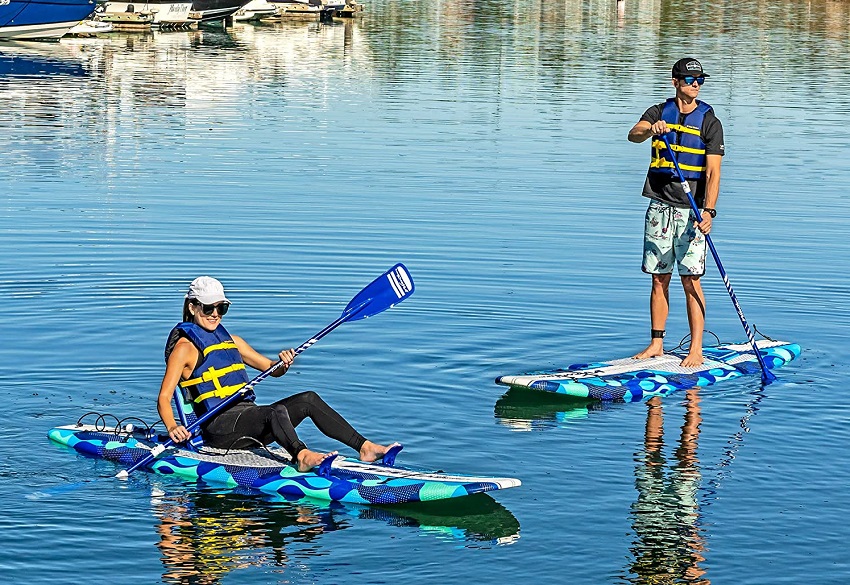
Typically, EPS foam boards will have a reinforcing “stringer”, a piece that runs through the center of the high-density foam core to add support and create a sturdier structure capable of bearing your weight and delivering a smooth ride.
But because they’re made using EPS foam, they weigh less than an epoxy board, a wooden board, and even many composite boards.
Fair warning: EPS foam isn’t the most durable option around, so it’s typically used in SUPs for kids or beginner paddle boarders. However, you can find foam boards fairly inexpensive–a great “starter board” for any newbie paddler.
Composite Boards
At the highest end of the price/quality spectrum are the boards made using composite materials, including fiberglass and carbon fiber.
Fiberglass paddle boards usually feature a high-density EPS core, and the exterior hard shell will be made using multiple layers of tough-but-lightweight fiberglass. (Note: some fiberglass boards will also have a coating of epoxy or polyester resin to add extra durability and waterproofing).

Fiberglass is very lightweight, typically used in touring or racing boards. However, it’s a pricey material, so not often used in the more recreational styles of paddleboards.
Carbon fiber SUP boards are made using the ultra-lightweight carbon fiber, a material that is tougher than steel but weighs significantly less. It’s another high-priced material, typically used in only the higher-end stand up paddle board models.
Carbon fiber is much more durable than fiberglass (which is prone to cracking, hence the use of polyester or epoxy resin reinforcement). It may be used in whitewater paddleboards as well as touring boards or top-of-the-line surf paddle boards.
Inflatable Paddle Boards
Inflatable boards are all the rage these days, and with good reason!
They’re lightweight (roughly 50% the weight of an epoxy board), insanely compact (can fit in a bag roughly the size of a suitcase), and beautifully portable. The fact that they’re made using tough materials also gives them a surprisingly good longevity.
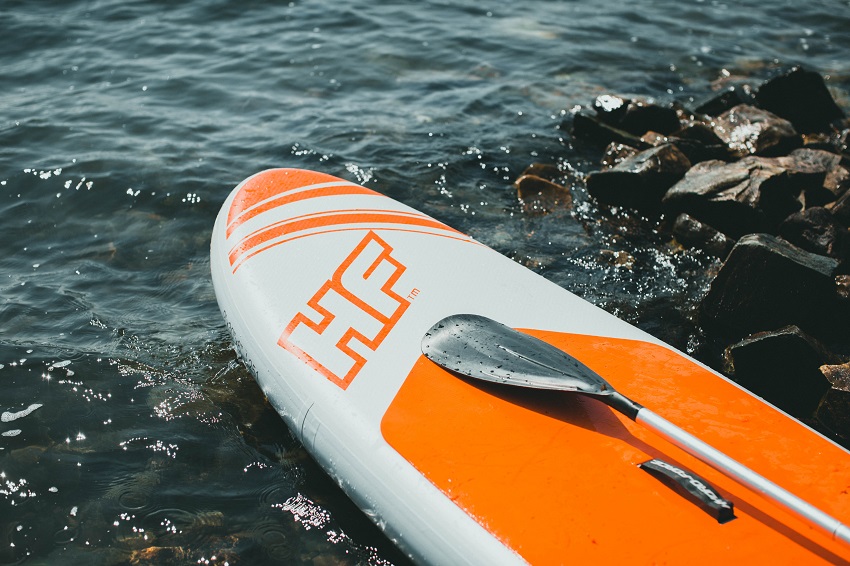
As I mentioned above, many inflatable boards are made using a mixture of PVC and polycarbonate, which produces an ultra-tough material that can withstand impact, scrapes, and punctures nearly as well as hard epoxy or rotomolded polyethylene.
In fact, the latest-model inflatable SUP boards are tough enough for most applications–from surfing to touring to racing, anything short of whitewater paddleboarding.
However, because inflatable paddle boards are filled with air, they aren’t as good for certain applications, as you’ll see in the “Types of Stand Up Paddle Boards By Activity” section below.
In the last 3-5 years, more and more inflatable boards are being built using drop-stitching, a process that stitches the upper and lower halves of the material together using hundreds of individual threads. This lets you inflate the SUP to much higher pressure (which is easier with an electric pump) and get an incredibly tough board without adding significant weight.
Soft Top Boards
Soft-top paddle boards can be pretty much any of the types of paddleboards above–plastic, hard epoxy, EPS foam, or composite–with one notable addition: a soft foam top deck.
This addition adds comfort (the soft foam is much spongier and offers better cushioning than a hard deck) and traction (more grip for your feet).
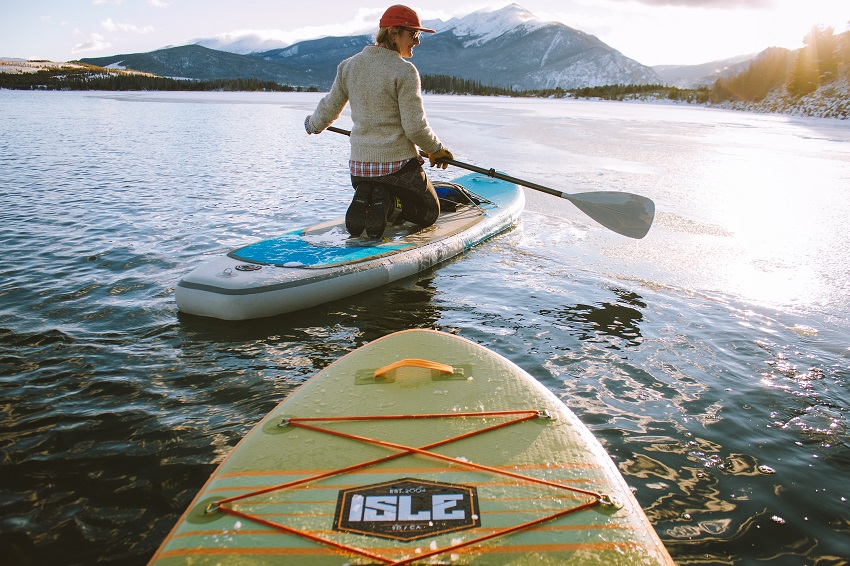
In fact, the use of soft foam tops has become so popular that a significant percentage of the paddle boards on sale today feature this design.
Different Paddle Board Sizes
Paddle boards come in a fairly “standard” range of sizes.
Short/Solo
Solo boards will usually range between 9 and 12.5 feet long. These shorter boards are speedier and easier to maneuver. Many surf SUPs are short boards, as are many recreational boards.
Medium/Tandem
Tandem boards will usually range between 10 and 13 feet long. The extra length ensures that the board has sufficient volume to handle the weight of two passengers.
However, many medium-length boards are designed for one-person use. Most Yoga SUPs are of medium length, as are boards built for heavier paddlers.
Long Boards
Long boards, typically used for long-distance touring, are usually longer than 12.5 feet. Some models are as long as 16 feet!
Longer boards will be less maneuverable but offer more stability and storage space than shorter boards–both of which are crucial for long-distance racing or touring.
Kids Boards
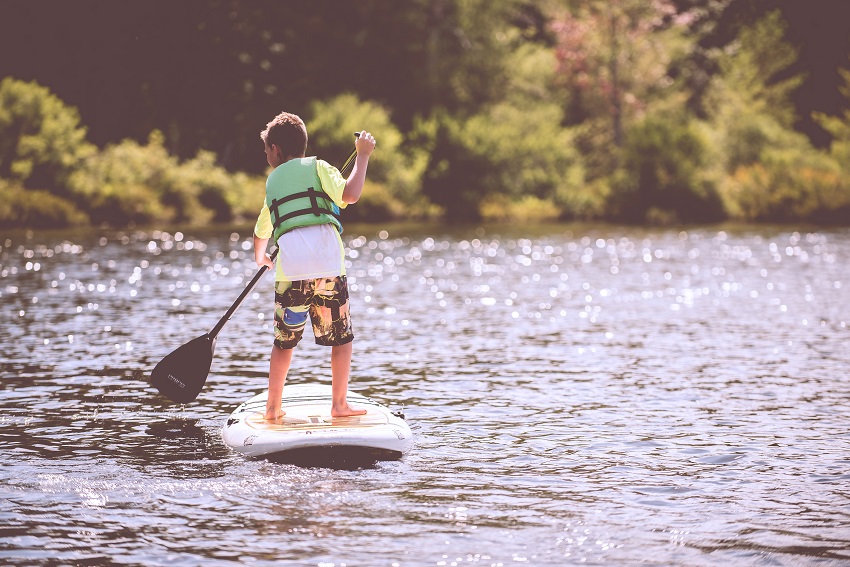
Paddleboards for kids will usually be around 8 feet long, though some can be as short as 6 feet in length. Kids tend to be lighter, so a kids board doesn’t require as much volume or as high as weight capacity. They also usually have planing hulls and may be a wider board to provide stability.
SUP Hull Types
Most SUPs feature one of two hull types:
Planing Hull
A planing hull is typically designed for flatwater paddling, recreational use, SUP Yoga, and whitewater paddler. This hull is very wide and flat, similar in design to the classic surf board shape. The hull shape makes it ride on top of the water and gives it excellent maneuverability.
Displacement Hull
A displacement hull features a pointed front end (nose or bow) and a sharper hull shape designed to slice through the water–the nose displaces water, pushing it aside, to create a faster, sleeker ride.
Paddleboards with displacement hulls also tend to track better, which is why they’re used for long-distance touring and racing paddleboards. Though they sacrifice maneuverability, they require less effort to paddle, so you can paddle longer or faster without tiring.
Types of Stand Up Paddle Boards By Activity
Finding the right type of paddle board for your specific activity is important–after all, it could be foolhardy (and even dangerous) to try and take the wrong paddle board into the wrong conditions.
For example, trying to cross vast expanses of open ocean on a recreational stand up paddle board, or taking an inflatable paddleboard whitewater kayaking.
No, to be smart and safe, you want to choose the right board for the right activity.
All-Around/Recreational Paddle Boards
Recreational paddleboards are built for all-around leisure use. They’re the perfect option for paddleboarding on a calm lake or river, or for paddling around a bay, inlet, or quiet coastal waters.
Because they feature a flat, planing hull, they’re the perfect solution for stand up paddleboarding down narrow rivers or creeks where you have to make sharp turns, but the current isn’t too strong.

Most inflatable SUPs are designed for recreational use (with a few notable exceptions). Of all the different types of paddle boards, recreational boards with their planing hull and rounded nose design tend to be the easiest to master.
Touring Paddle Boards
Touring paddle boards are used for long distance paddling across big lakes and vast stretches of open ocean.
They tend to be longer, wider, and feature a displacement hull and pointed nose that allows you to cover lots of distance quickly. Touring paddleboards feature more on-board storage solutions, too, and will have much higher stability for paddle boarding in rougher waters.
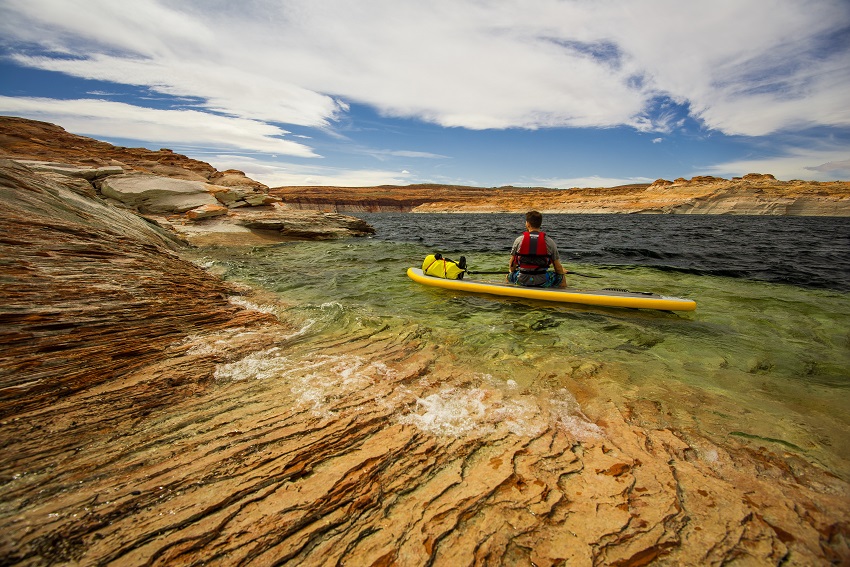
Touring boards are ideal for island-hopping, exploring long stretches of coast line, or paddle boarding the American Great Lakes.
Surf Paddle Boards

Surf SUP boards are tend to be on the shorter and narrower side compared to long boards or the boards used for flat water paddling. This design is intentional, though–it offers better maneuverability and speed for catching waves.
Surf stand up boards will have less stability (especially on flat water), so it’s a bit harder to master the balance. Think of them as an over-sized surf board that you paddle standing up rather than lying down. You’ll have to master the surfing technique in order to use this type of board–making it a bit more challenging than most of the other boards on our list.
Fishing Paddle Boards
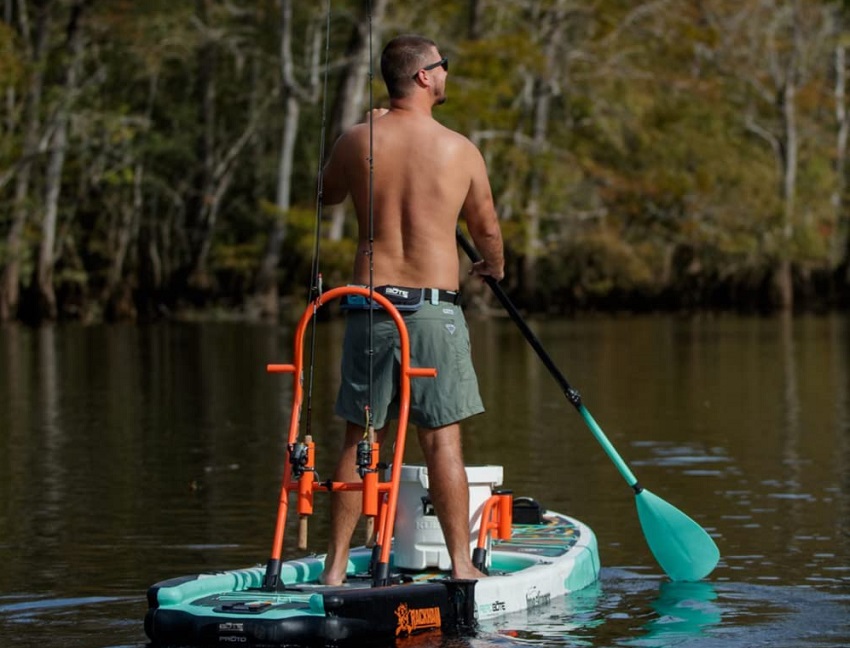
Fishing paddle boards are designed a bit wider, longer, and with a higher volume than many of the other paddleboard types.
(Note: “Volume” refers to the board’s buoyancy, typically measured in liters. The higher the volume, the more weight the board is able to handle–not just your body weight, but also the weight of your gear.)
Fishing boards typically feature plenty of space for you to stand and move around, as well as room to accommodate a cooler, tackle box, and other fishing gear.
Some SUP fishing boards may even be designed with specialized mounts to secure fishing rod holders. They’re wider boards that will keep you stable while sitting and standing.
Yoga/Fitness Paddle Boards

SUP Yoga has become quite the popular activity in the last decade or so, so it makes perfect sense that there would be boards designed specifically for that activity.
Yoga paddleboards are typically wider and have a higher volume, with greater stability to accommodate your weight when standing and bending in the various SUP Yoga poses.
There are inflatable paddle board models designed specifically for Yoga, as well as hard-shell paddle boards. Most Yoga paddle boards feature a planing hull and rounded nose, intended to be used on flat, calm water.
Performance/Racing Paddle Boards
Performance, or racing, paddleboards are built with speed in mind. A race board will usually have a displacement hull, sharp nose, and a longer, narrower shape, all of which combines to make for faster stand up paddle boarding.
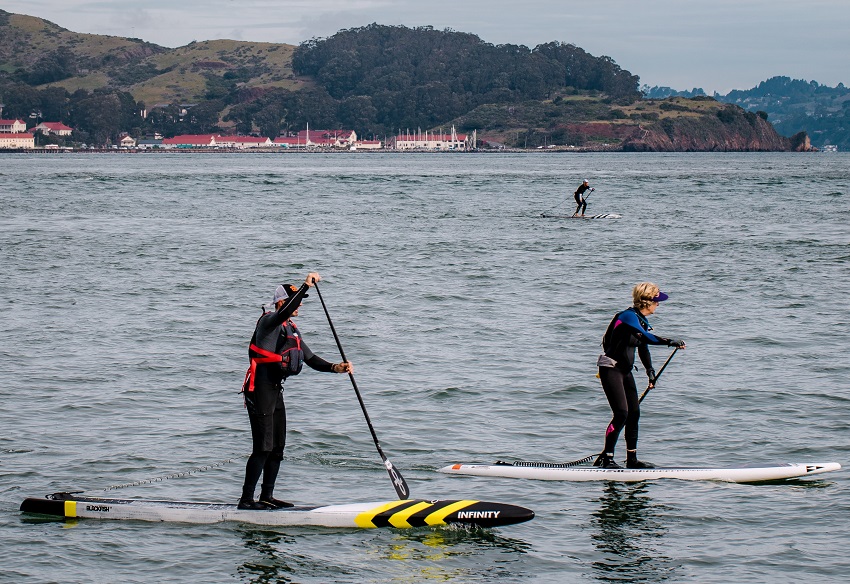
Some racing boards are built for ocean competitions (similar in design to most touring boards, in fact), while others are better-suited to flatwater or downriver races. They may be a bit tough for newbie paddlers to master due to the higher secondary stability (on turbulent waters), but expert stand up paddle boarders will find them much easier to use.
Whitewater Paddle Boards
Whitewater stand up paddle boarding is not for the faint of heart, but it can be an absolutely exhilarating challenge for those who are brave enough to risk it.
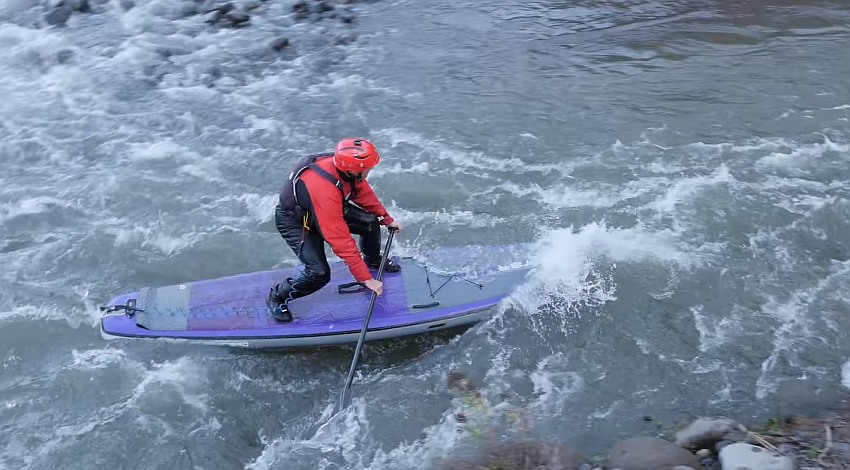
Typically, whitewater boards are shorter than recreational boards (usually around 8.5 to 11 feet long), are typically wider (to provide more stability), and will feature planing hulls (to offer buoyancy and maneuverability). They have to be very responsive to make sharp, quick turns when racing down whitewater rapids.
Whitewater paddleboards are also built using tougher materials (such as carbon fiber), which is necessary in order to withstand the beating that they’ll take on rapids.
Paddleboard FAQs
Historically, “paddleboards” are any board designed to be used with a paddle. Many of them are paddled from a sitting or kneeling position.
SUPs are designed to be paddled from a standing up position as well as standing/kneeling.
Nowadays, the two terms are used interchangeably, and there is really no difference between them.
Of all the different types of paddle boards, recreational paddleboards are usually the best choice for beginners. They’re typically very stable on calm, flat water, making it easy for even total newbies to master the paddling and balancing aspects of the activity.
Yoga/Fitness SUPs are also very stable, though less maneuverable. Fishing boards will maintain middling maneuverability without sacrificing stability.
The answer to this question will depend largely on what activity/activities you intend to get up to with your paddleboard.
Inflatable paddleboards are more portable, require less space to store in your home, and are easy to transport in any vehicle without the need for a roof rack. You can find inflatable recreational boards, Yoga boards, fishing boards, and even some racing and touring boards.
Solid paddleboards are designed to take a beating, so they’re the better choice for whitewater paddling. Their hard hull is also better suited to racing and touring. However, they’re less portable, require more storage space, and will be heavier than inflatable SUPs. The higher-end solid boards are also significantly more expensive than even the top-tier inflatable paddleboards.

